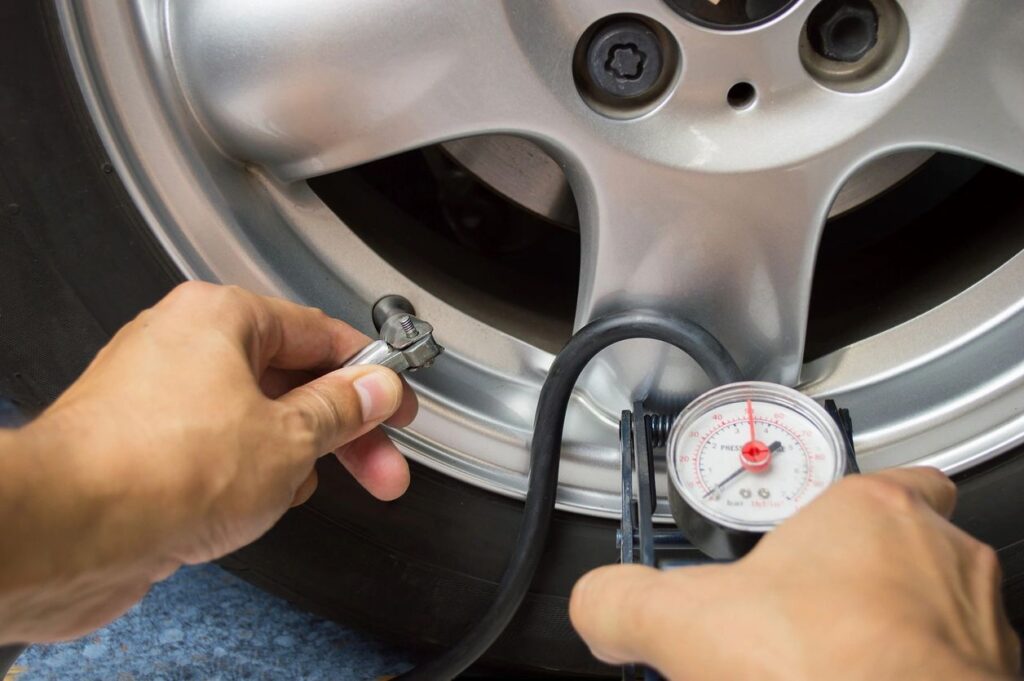
All averages are average annual CO2 pounds saved.
- Automobiles
- Use public transportation. At least one day a week, take the bus or light-rail, ride a bike, walk or carpool. Every time you avoid driving one mile, you save one pound of carbon dioxide. Leaving your car at home just two days a week will reduce greenhouse gas emissions significantly = 1,600
- Fill your car tires. Under-inflated tires require more energy to roll, which translates into more frequent gasoline fill-ups. According to the Department of Energy, you can improve your fuel economy by about 3.3 percent if you keep your tires inflated properly. By maintaining proper tire pressure, you could reduce your GHGs by at least 1/8 of a ton each year and save at least $50 in fuel costs = 250
- Minimize car idling. Experts recommend that you should turn your car off if you are running it for more than 10 seconds. For every 10 minutes your engine is off, you prevent one pound of CO2 from being released = Up to you
- Carpool to work or to school and save 8 pounds of CO2 emissions per ride to and from work. Cutting 25 miles a week from your driving saves 1,500 lbs of CO2[1] = 1,500
- Walk or ride your bike when possible. You can save 4.5lbs of CO2 per 5 miles[2] = Up to you!
- Tune your ride. A well-maintained car is more fuel-efficient, produces fewer greenhouse gas emissions, is more reliable, and is safer! Keep your car well tuned, follow the manufacturer’s maintenance schedule, and use the recommended grade of motor oil. Also check and replace your vehicle’s air filter regularly. The recommendation is to check once a month = 800 +
- Avoid heavy breaking and unnecessary acceleration. Some studies found that aggressive driving can result in 40 percent more fuel consumption than consistent, calm driving = 1.9 lbs of CO2 / 5 miles[3]
- Buy fuel-efficient vehicles. By purchasing the most fuel-efficient vehicle in a particular class, you can save up to $300-$700 in fuel costs per year. And by purchasing a vehicle that gets five more miles per gallon than your current vehicle, you can avoid emitting about 17 tons of greenhouse gases over the lifetime of the vehicle = Up to you!
- Combine errands to reduce emissions from driving = 600[4] [5]
- Use apps such as Apple Maps, Waze or Google Maps to avoid traffic as much as possible. Check out this piece to decide which app is best for you = Up to you!
- Work Remotely for One Day a Week or Switch to a Four Day Work Week. Many companies are loosening their ties to the traditional five day work week and allowing their employees to adopt a four week schedule when appropriate. Instead of going to work for an eight hour shift, go for ten, and then get a three day weekend. Or perhaps you can telecommute one day a week = Up to you (and your boss)!
- Travel
- Fly less. Air travel produces large amounts of emissions so reducing how much you fly by even one or two trips a year can reduce your emissions significantly. You can also offset your air travel by investing in renewable energy projects. One roundtrip from LAX to NYC produces approx. 1,976 pounds of GHGs = Up to you!
- Fly nonstop when possible. Direct flights use less carbon emissions than connecting flights. When factoring in the additional airplane emissions produced from landing and taking off, as well as the extra distance, nonstop is a better way to go when you are able. Check out myClimate Flight Carbon Calculator to see how your choice can impact greenhouse gas emissions from your travel = Up to you!
- Go economy class. Business class can be responsible for almost three times as many emissions as economy because in economy, the flight’s carbon emissions are shared among more passengers. First class can result in nine times more carbon emissions than economy.[8] According to myClimate Flight Carbon Calculator, a non-stop economy roundtrip flight from LAX to JFK emits 2,600 lbs of CO2. The same flight, but flying Business Class, emits 5,000 lbs of CO2, while the same flight, but flying First Class, emits 7,800 lbs of CO2. That means by choosing Economy over Business Class you save 2,400 lbs of CO2 and by choosing Economy over First Class you save 5,200 lbs of CO2 = 2,400 – 5,200
- Make your hotel stay eco-friendly. When staying in a hotel turn the lights and air-conditioning off when you leave your hotel room, and ask for your room towels to be washed every other day, rather than every day. Or check out this list of the best sustainable hotel chains = Up to you!
[1] https://www.rideshare.com/easy-commute/environmental-benefits/
[2] https://www.ourstreetsmpls.org/does_bike_commuting_affect_your_carbon_footprint_and_how_much
[3] https://www.ourstreetsmpls.org/does_bike_commuting_affect_your_carbon_footprint_and_how_much
[4] https://www.fremontgreenchallenge.org/action/combine-trips
[5] https://climatekids.nasa.gov/review/carbon/gasoline.html
[6] https://www.nytimes.com/2017/07/27/climate/airplane-pollution-global-warming.html
[7] https://calculator.carbonfootprint.com/calculator.aspx?lang=en-GB&tab=3
[8] https://www.nytimes.com/2017/07/27/climate/airplane-pollution-global-warming.html